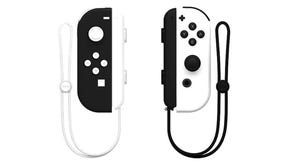Call of Duty: Vanguard details PS5 DualSense support and four of its Operators
Ahead of launch on Xbox, PlayStation, and PC.
Activision - which remains mired in a messy legal battle following the state of California's lawsuit alleging sexual discrimination, harassment and a "frat boy" culture at Blizzard - has shared a handful of new Call of Duty: Vanguard details ahead of the WW2 shooter's launch next week.
All the new information comes via the PlayStation Blog, in which Vanguard developer Sledgehammer offers details on the game's PS5 DualSense wireless controller support alongside a look at four Operators, complete with introductory trailers for each.
Two of the Operators - Cameroonian-British paratrooper Sgt. Arthur Kingsley and Soviet sniper Lt. Polina Petrova, both playable in Vanguard's single-player and multiplayer modes - have been seen before, but Sledgehammer has also now revealed two new multiplayer-only Operators, Daniel Take Yatsu and Padmavati Balan, explaining how each fits into the narrative world.
The more practical information comes in Sledgehammer's second PlayStation Blog post, which details how Call of Duty: Vanguard will make use of the PlayStation 5 DualSense wireless controller's haptic feedback and adaptive triggers.
Sledgehammer says its goal when utilising DualSense was to "simulate the trigger weight of real-world weapons", and, to that end, there are several stages to each trigger pull in Vanguard. The "take-up" is the distance a trigger travels once a player starts to press it; the "break" is the point at which a shot is fired once a correct amount of pressure is applied; "over-travel" is how far the trigger pulls after the break point, and lastly there's the "trigger reset", which stops automatic firing and resets the break.
"It's at the 'break' stage that the DualSense controller's adaptive triggers apply varying degrees of feedback to help create the feeling of weight on the trigger," explains Sledgehammer. "This feedback is applied differently for different weapons, creating a more accurate sense of trigger weight for each. For instance, if you're running around with a 1911 sidearm you'll feel a moderate amount of tension as you get to the break point, but it won't hold the same weight as that M1 Garand marksman rifle".
"The feedback applied by the DualSense controller doesn't just impact the firing trigger in Vanguard," Sledgehammer continues, "but the scope trigger as well, meaning the downsight speed and L2 trigger weight changes based upon what weapon you're wielding. For example. heavy weapons will feel heavy, lighter weapons will feel light, and everything in between. Plus, the attachments you have on your weapon will play a role in this as well, so it's a factor to consider as you're making your selections."
All this comes into play alongside haptic feedback support, which Sledgehammer says will "add to the visceral experience of global warfare".
Call of Duty: Vanguard will be available for Xbox One, Xbox Series X/S, PC, PlayStation 4, and PS5 next Friday, 5th November.




.png?width=291&height=164&fit=crop&quality=80&format=jpg&auto=webp)



.jpg?width=291&height=164&fit=crop&quality=80&format=jpg&auto=webp)









